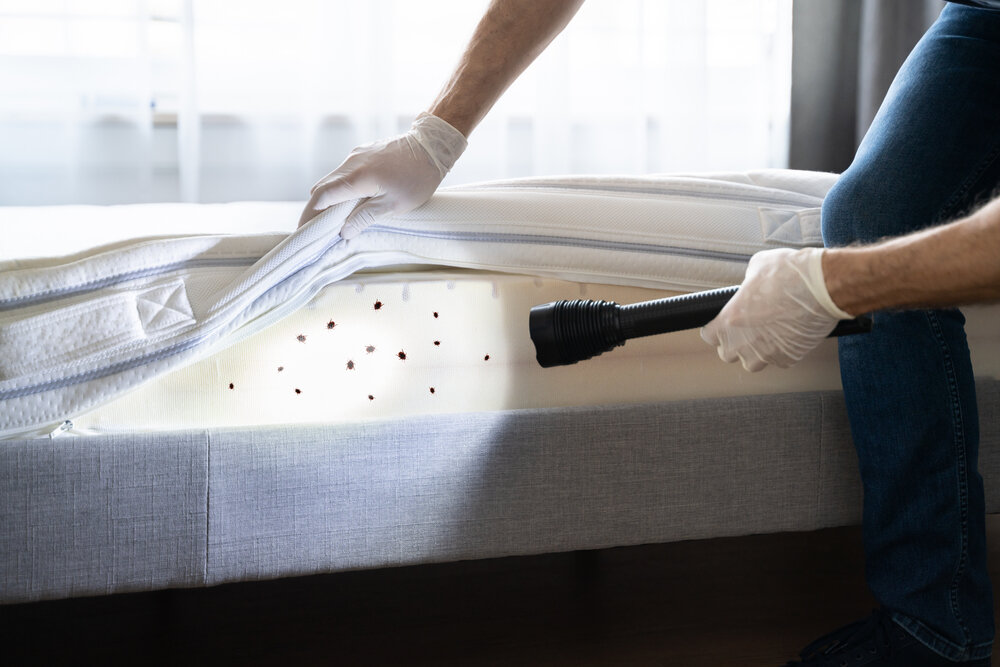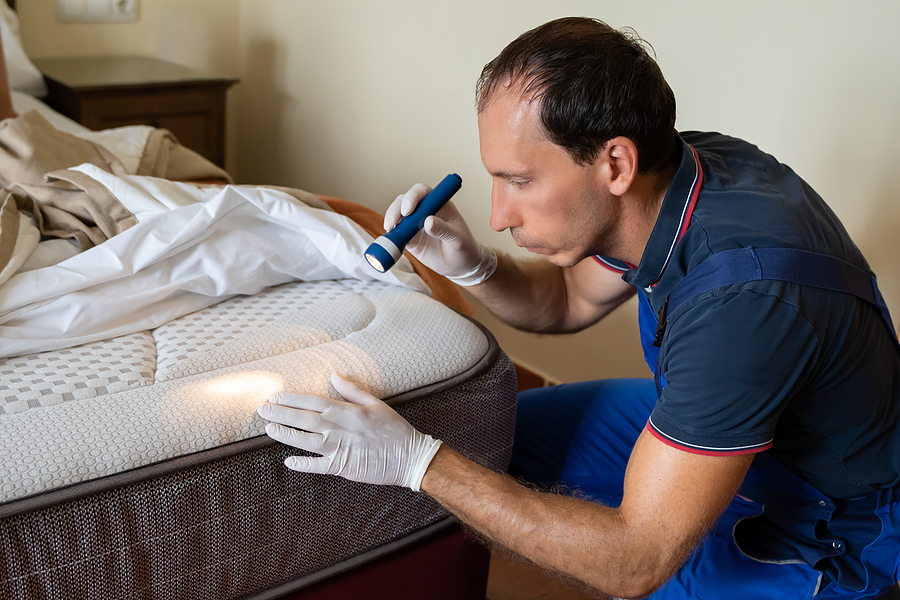Discovering the Scientific Research Behind Bed Insect Warmth Treatments as a Lasting Pest Administration Approach
One such approach that has actually gotten grip in recent years is the use of heat treatments to battle bed bug infestations. The ins and outs of exactly how warm efficiently removes bed bugs and the more comprehensive effects for lasting insect management techniques make this a topic worth checking out further.
Bed Pest Warm Treatment Refine

Thermal Death Point for Bed Bugs
Exposing bed pests to raised temperatures beyond their thermal tolerance range is essential for achieving effective obliteration in warmth treatment processes. The thermal fatality factor for bed bugs describes the temperature level at which these insects can not survive. Study suggests that bed insects begin to die when exposed to temperature levels above 113 ° F(45 ° C) for a sustained duration. As the temperature raises, so does the death rate of bed pests. At around 118 ° F(48 ° C ), bed bugs start to die rapidly, with a death rate of almost 99% within minutes of direct exposure. This demonstrates the level of sensitivity of bed insects to high temperatures and highlights the performance of heat therapies in removing problems. By reaching and keeping temperatures over the thermal death point for bed bugs, bug management experts can guarantee extensive removal of bed insect populaces, including hard-to-reach locations where chemical therapies may be much less reliable. Understanding the thermal fatality factor for bed insects is essential for carrying out effective heat treatment approaches and achieving sustainable bug management results.
Benefits of Warm Treatments
Having established the vital thermal fatality point for bed bugs, it is necessary to currently check out the considerable advantages that heat treatments supply in properly getting rid of these resistant bugs. When contrasted to traditional chemical methods, warmth treatments present numerous essential benefits. Among the main advantages is that warmth can permeate deep into fractures and crevices where bed insects hide, ensuring that also the most hard-to-reach locations are heated up to lethal temperature levels. This extensive approach not just kills live pests but additionally targets bed insect eggs, preventing future problems.
Furthermore, warm therapies are non-toxic and eco pleasant, making them a lasting pest administration approach. Unlike chemical pesticides, heat treatments do not leave dangerous deposits that can pose threats to human health and wellness or the setting. This facet is particularly essential in sensitive atmospheres such as health centers, colleges, and houses where chemical use may not be desirable.
Additionally, heat treatments have a high success rate in eliminating bed bug infestations in a single treatment, reducing the need for multiple gos to great post to read and reducing disruption to residents. This efficiency not only conserves time and cash yet additionally supplies comfort to those handling bed bug problems.
Efficiency of Warm Therapy

Warm treatments have the included benefit of killing bed pest eggs, which are usually immune to conventional chemical treatments. On the whole, the efficiency of heat therapies in getting rid of bed insect infestations makes them a reliable and lasting parasite management approach.
Lasting Insect Management Benefits
Implementing sustainable bug monitoring practices supplies long-term benefits for both the atmosphere and public wellness. By making use of methods such as heat treatments for bug control, we can reduce the reliance on damaging chemical pesticides that can have negative results on ecosystems and human health - DC exterminator. Lasting parasite management strategies help in preserving biodiversity by targeting particular insects without harming non-target organisms, thereby preserving a balanced community
Additionally, sustainable pest management techniques add to the general wellness and health of the general public. By reducing exposure to toxic chemicals made use of in standard bug control techniques, heat treatments give a much safer option for pest monitoring in residential, business, and public areas. This reduction in chemical usage additionally assists in avoiding chemical residues from contaminating water, dirt, and air, securing environmental top quality.
Conclusion
To conclude, bed pest heat therapies have been revealed to be a effective and sustainable pest administration strategy. The thermal fatality point for bed pests makes them prone to heat treatments, which have numerous advantages over typical chemical treatments. The performance of heat therapies in eliminating bed insect problems while reducing visit this page ecological impact highlights the capacity of this approach as a sustainable service for parasite control.
The bed bug warm therapy process includes elevating the temperature level within infested areas to a degree that effectively eliminates bed insects and their eggs. By getting to and keeping temperatures above the thermal death point for bed pests, pest management experts can make sure thorough elimination of bed bug populations, including hard-to-reach areas where chemical therapies might be much less reliable. One of the key benefits is that heat can penetrate deep into cracks and gaps where bed insects conceal, making sure that also the most hard-to-reach locations are heated to dangerous temperature levels. Unlike chemical therapies that might leave behind immune populaces, warmth therapies supply a safe and eco pleasant option that can permeate deep into furnishings, walls, and other hard-to-reach areas where bed bugs conceal.
The thermal fatality factor for bed insects makes them vulnerable to warm treatments, which have various advantages over traditional chemical therapies.
Comments on “Premier Bed Bug Exterminator: DC Exterminator for Effective Treatment”